A complete tutorial on USDT cross-chain transfers
php editor Youzi will introduce you to a complete tutorial on USDT cross-chain transfer. USDT is a cryptocurrency based on blockchain technology. Cross-chain transfer refers to transferring USDT from one blockchain network to another blockchain network. This tutorial details the steps and operation methods of USDT cross-chain transfer, and is suitable for beginners to get started. By studying this tutorial, you will be able to easily implement cross-chain transfers of USDT and enjoy a more convenient digital asset management experience. Come and follow our tutorial and master the skills of USDT cross-chain transfer!
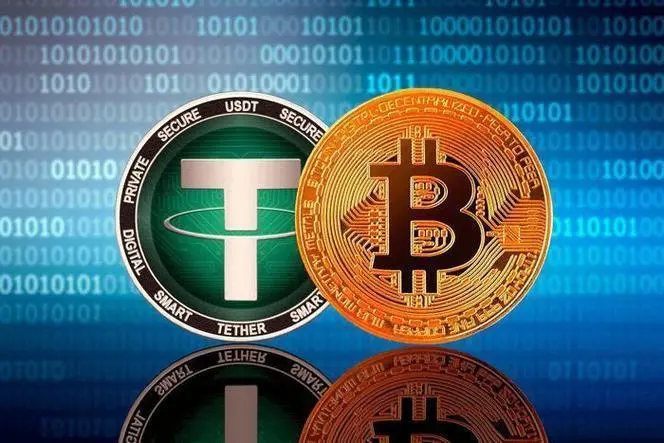
How to transfer USDT across chains?
The following uses Math Wallet as an example to introduce USDT cross-chain transfer. The cross-chain process from Ethereum to Binance Smart Chain is as follows:
1. Log in to Math Wallet, switch to ETH wallet, and click Crosschain
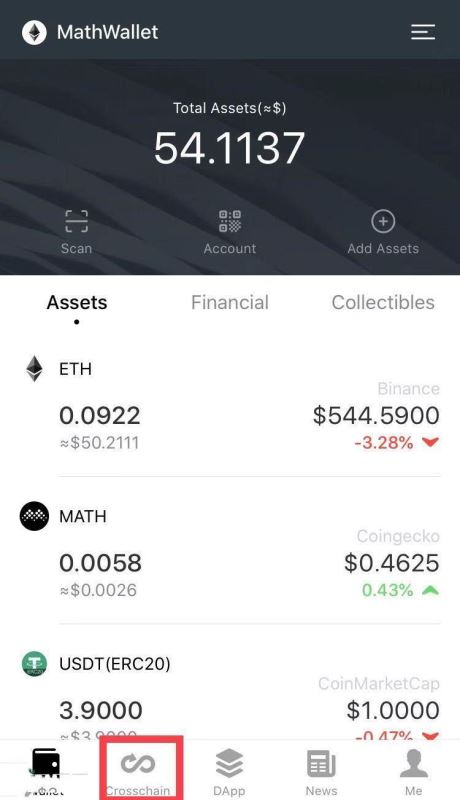
2. Enter On the cross-chain page, select the transfer asset. Currently, it supports: ETH/USDT/MATH/UNI/USDC/SUSHI/LINK/DAI
Here we take USDT as an example

3. After entering the amount, select Binance Smart Chain (Maiz Wallet currently supports 7 cross-chain functions)
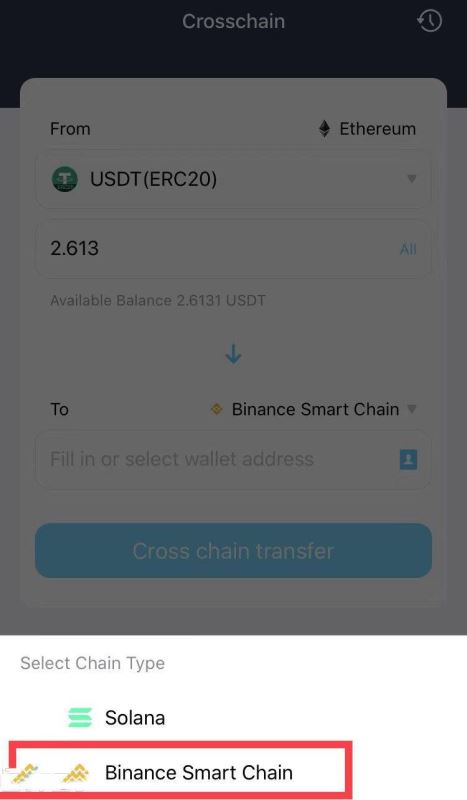
4. Select the address
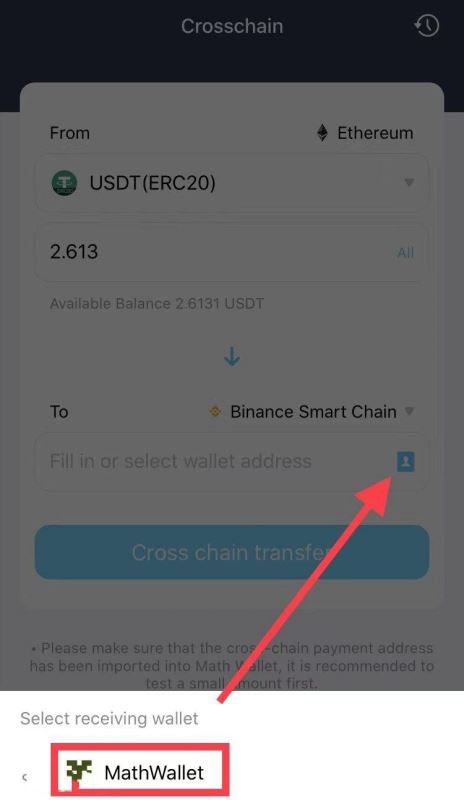
5. Click on cross-chain transfer and wait for on-chain confirmation to complete the transaction. You can click on the transfer record in the upper right corner to view order details.
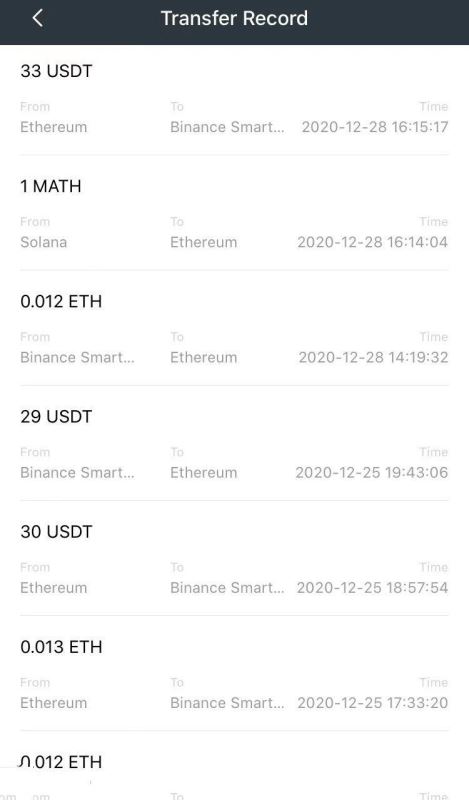
What currency does USDT belong to?
USDT is a cryptocurrency that is a type of stablecoin, which is designed to be pegged to the value of some stable asset, such as a fiat currency or commodity, to maintain a relatively stable value. USDT stands for Tether, which is a stable currency issued by Tether Limited. It was originally a token based on the Bitcoin blockchain and was later also issued on other blockchain platforms, such as Ethereum and Wave. field and sol.
USDT aims to maintain a fixed exchange rate of 1:1 with the value of the US dollar, that is, the value of each USDT token should be equal to 1 US dollar. This fixed value makes USDT widely used in cryptocurrency transactions as a store of value, a medium of exchange, and a tool for transferring funds.
USDT aims to be pegged to the value of the US dollar, but it is not a completely decentralized cryptocurrency, but is issued and managed by Tether Limited, a centralized entity.
USDT cross-chain transfer is the transfer of USDT tokens between different blockchain platforms. This process may involve transfer fees and transfer speeds. Make sure you need to understand before making cross-chain transfers. Associated fees, transfer speed and possible risks. Additionally, always ensure that the digital wallet you use is safe and secure and that appropriate security measures are in place to protect your assets and personal information. Of course, the fee structure and security of the relevant blockchain platform also need to be paid attention to.
The above is the detailed content of A complete tutorial on USDT cross-chain transfers. For more information, please follow other related articles on the PHP Chinese website!

Hot AI Tools

Undresser.AI Undress
AI-powered app for creating realistic nude photos

AI Clothes Remover
Online AI tool for removing clothes from photos.

Undress AI Tool
Undress images for free

Clothoff.io
AI clothes remover

Video Face Swap
Swap faces in any video effortlessly with our completely free AI face swap tool!

Hot Article

Hot Tools

Notepad++7.3.1
Easy-to-use and free code editor

SublimeText3 Chinese version
Chinese version, very easy to use

Zend Studio 13.0.1
Powerful PHP integrated development environment

Dreamweaver CS6
Visual web development tools

SublimeText3 Mac version
God-level code editing software (SublimeText3)

Hot Topics
 Ouyi Ouyi Ouyi Ouix Ouyi Global Station Login Home Page
Apr 21, 2025 pm 11:57 PM
Ouyi Ouyi Ouyi Ouix Ouyi Global Station Login Home Page
Apr 21, 2025 pm 11:57 PM
Ouyi OKX is the world's leading digital asset trading platform. 1) Its development history includes: it will be launched in 2017, the Chinese name "Ouyi" will be launched in 2021, and it will be renamed Ouyi OKX in 2022. 2) Core services include: trading services (coin, leverage, contracts, DEX, fiat currency trading) and financial services (Yubibao, DeFi mining, lending). 3) The platform's special functions include: market data services and risk control system. 4) Core advantages include: technical strength, security system, service support and market coverage.
 How to trade quantum chains
Apr 21, 2025 pm 11:42 PM
How to trade quantum chains
Apr 21, 2025 pm 11:42 PM
The quantum chain (Qtum) transaction process includes three stages: preliminary preparation, purchase and sale. 1. Preparation: Select a compliant exchange, register an account, perform identity verification, and set up a wallet. 2. Purchase quantum chains: recharge funds, find trading pairs, place orders (market orders or limit orders), and confirm transactions. 3. Sell quantum chains: Enter the trading page, select the trading pair and order type (market order or limit order), confirm the transaction and withdraw cash.
 The latest updates to the oldest virtual currency rankings
Apr 22, 2025 am 07:18 AM
The latest updates to the oldest virtual currency rankings
Apr 22, 2025 am 07:18 AM
The ranking of virtual currencies’ “oldest” is as follows: 1. Bitcoin (BTC), issued on January 3, 2009, is the first decentralized digital currency. 2. Litecoin (LTC), released on October 7, 2011, is known as the "lightweight version of Bitcoin". 3. Ripple (XRP), issued in 2011, is designed for cross-border payments. 4. Dogecoin (DOGE), issued on December 6, 2013, is a "meme coin" based on the Litecoin code. 5. Ethereum (ETH), released on July 30, 2015, is the first platform to support smart contracts. 6. Tether (USDT), issued in 2014, is the first stablecoin to be anchored to the US dollar 1:1. 7. ADA,
 What are the hybrid blockchain trading platforms?
Apr 21, 2025 pm 11:36 PM
What are the hybrid blockchain trading platforms?
Apr 21, 2025 pm 11:36 PM
Suggestions for choosing a cryptocurrency exchange: 1. For liquidity requirements, priority is Binance, Gate.io or OKX, because of its order depth and strong volatility resistance. 2. Compliance and security, Coinbase, Kraken and Gemini have strict regulatory endorsement. 3. Innovative functions, KuCoin's soft staking and Bybit's derivative design are suitable for advanced users.
 Ranking of leveraged exchanges in the currency circle The latest recommendations of the top ten leveraged exchanges in the currency circle
Apr 21, 2025 pm 11:24 PM
Ranking of leveraged exchanges in the currency circle The latest recommendations of the top ten leveraged exchanges in the currency circle
Apr 21, 2025 pm 11:24 PM
The platforms that have outstanding performance in leveraged trading, security and user experience in 2025 are: 1. OKX, suitable for high-frequency traders, providing up to 100 times leverage; 2. Binance, suitable for multi-currency traders around the world, providing 125 times high leverage; 3. Gate.io, suitable for professional derivatives players, providing 100 times leverage; 4. Bitget, suitable for novices and social traders, providing up to 100 times leverage; 5. Kraken, suitable for steady investors, providing 5 times leverage; 6. Bybit, suitable for altcoin explorers, providing 20 times leverage; 7. KuCoin, suitable for low-cost traders, providing 10 times leverage; 8. Bitfinex, suitable for senior play
 How long does it take to recharge digital currency to arrive? Recommended mainstream digital currency recharge platform
Apr 21, 2025 pm 08:00 PM
How long does it take to recharge digital currency to arrive? Recommended mainstream digital currency recharge platform
Apr 21, 2025 pm 08:00 PM
The time for recharge of digital currency varies depending on the method: 1. Bank transfer usually takes 1-3 working days; 2. Recharge of credit cards or third-party payment platforms within a few minutes to a few hours; 3. The time for recharge of digital currency transfer is usually 10 minutes to 1 hour based on the blockchain confirmation time, but it may be delayed due to factors such as network congestion.
 What to do if the USDT transfer address is incorrect? Guide for beginners
Apr 21, 2025 pm 12:12 PM
What to do if the USDT transfer address is incorrect? Guide for beginners
Apr 21, 2025 pm 12:12 PM
After the USDT transfer address is incorrect, first confirm that the transfer has occurred, and then take measures according to the error type. 1. Confirm the transfer: view the transaction history, obtain and query the transaction hash value on the blockchain browser. 2. Take measures: If the address does not exist, wait for the funds to be returned or contact customer service; if it is an invalid address, contact customer service and seek professional help; if it is transferred to someone else, try to contact the payee or seek legal help.
 Ranking of the top ten digital currency exchanges The latest list of top ten virtual currency trading software platforms
Apr 22, 2025 pm 01:15 PM
Ranking of the top ten digital currency exchanges The latest list of top ten virtual currency trading software platforms
Apr 22, 2025 pm 01:15 PM
The top ten digital currency exchanges are: 1. Binance, 2. OKX, 3. gate.io, 4. Coinbase, 5. Kraken, 6. Bitfinex, 7. Huobi, 8. KuCoin, 9. Bitstamp, 10. Gemini, these platforms are highly regarded for their high liquidity, extensive trading pairs, relatively low transaction fees, multi-level security measures, and a friendly user interface.





